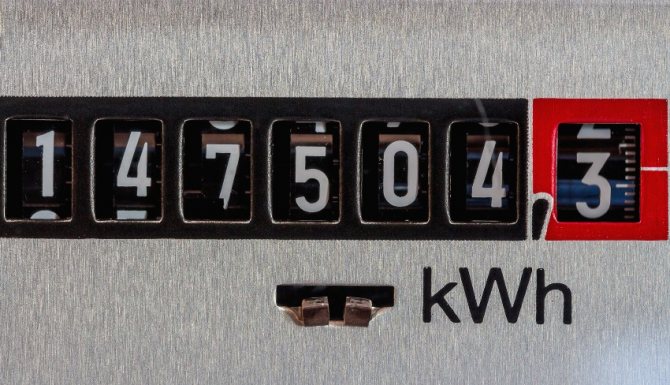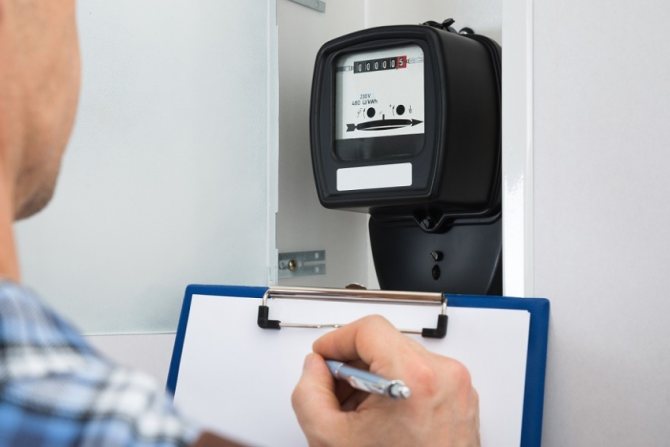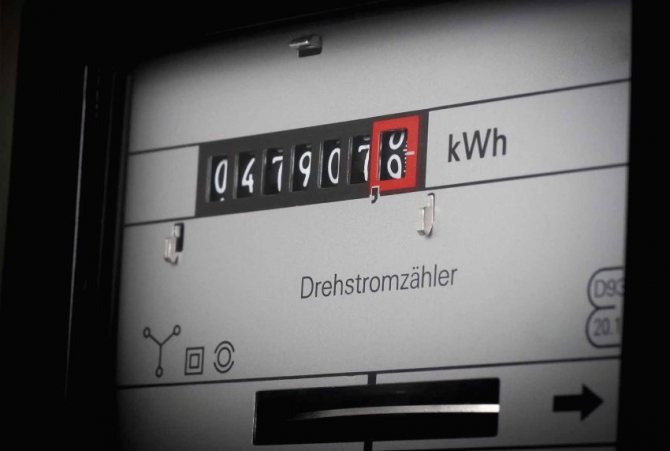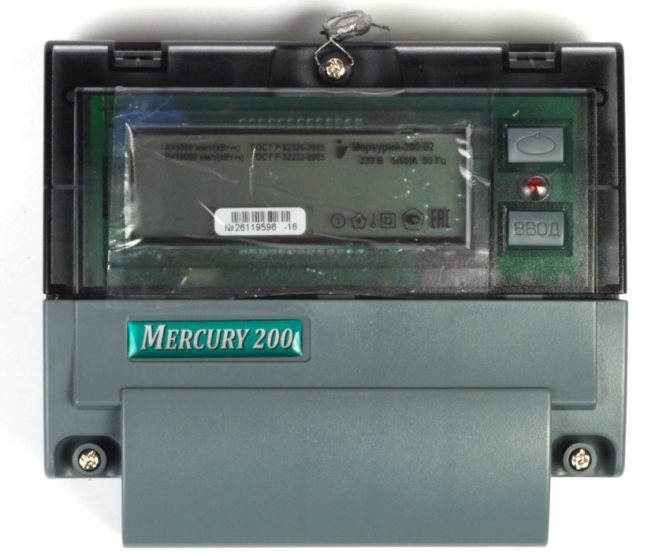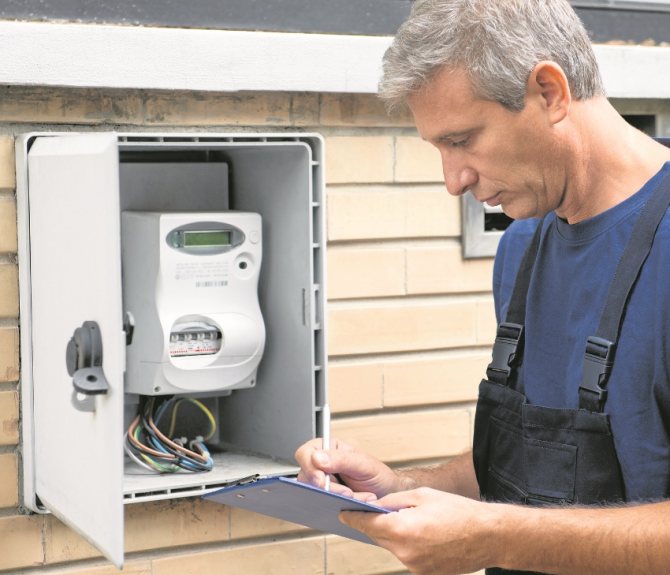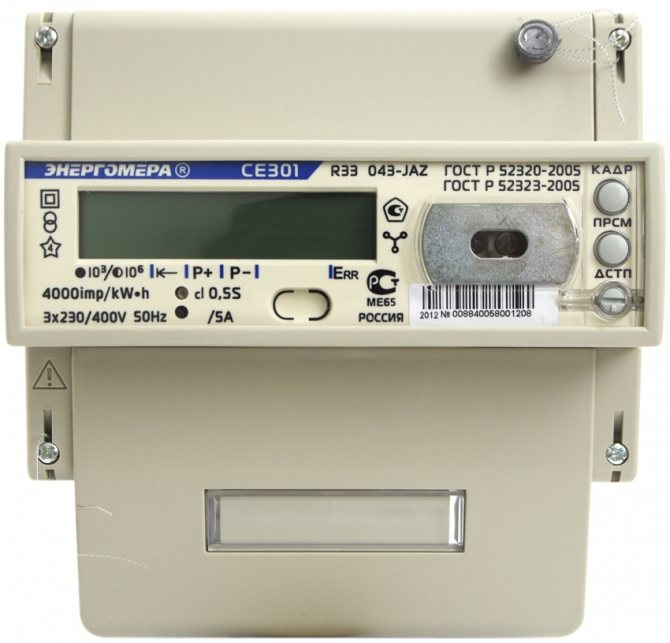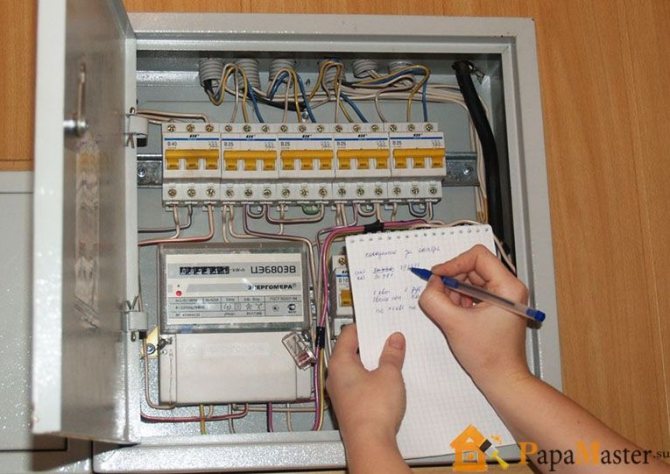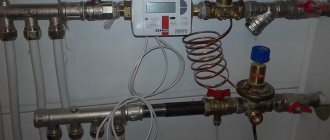What is a three-phase electric meter?
What does a three-phase electric meter look like? Photo # 1
A three-phase electric meter is a standard metering device installed in individual residential premises or in their complexes. The main function of this device is to calculate the electricity consumed in a particular dwelling and reflect the generated readings in a form convenient for a person.
The difference between a three-phase meter and a single-phase one is that the first is capable of working in more loaded networks, is less whimsical to use and is more accurate in readings. However, for small living quarters, there is no special sense in installing three-phase metering devices, since a single-phase device can fully display all the necessary readings. In any case, on the territory of our country, both types of electricity meters are used with the same frequency.
It is very simple to distinguish between a three-phase and a single-phase meter - just pay attention to how many wires fit to the device:
- if 3 or less - the device operates on one phase;
- if more than 3 - the device is three-phase.
Today, two types of three-phase electric meters are produced: induction and electric. The former work on the principle of displaying power consumption readings on special scrolling elements, while the latter display data on an electronic scoreboard.
Where is the meter installed and which models are the most popular?
Tips for installing and choosing a three-phase meter. Photo # 2
As noted earlier, for calculating electricity consumption in a small area (apartment, private house, etc.), there is no particular expediency in using three-phase meters. However, according to the latest statistics, about a third of private dwellings in the Russian Federation are equipped with just such an electricity meter.
As for a wider range of uses for three-phase devices, their use is common in:
- Multi-family buildings (when it comes to metering electricity throughout the house).
- Large technical enterprises.
- Large offices.
That is, three-phase meters are used mainly where the power grid extends over a large area and the load on it is quite high. At the moment, the most popular models of such devices are as follows:
- among the induction options - Mercury 200, Izmeron and Energomer.
- among the electronic versions of devices - Mercury 200, Energomer, Micron and Syman.
There are no special differences between electricity meters from different manufacturers, so we probably won't consider each of them in more detail.
How is the readings taken?
We take readings of the electric meter. Photo # 3
Readings from any electric meter are taken either by the owners of the facility in which the device is installed, or authorized persons from the management company that provides utilities to a specific group of persons. At the same time, the owner of the home has every right not to give the readings of his meter both to the representatives of the management company and to other persons.
In this case, the calculation of the cost of services for the provision of electricity will be carried out at the average regional tariffs.
The direct procedure for taking readings for different types of three-phase meters is different:
- when using a device with an induction form of counting, to obtain the desired numbers, it is necessary to rewrite the available readings on the rotating display of the device on a sheet of paper.If one or two digits, as a rule, out of five or six, generally have a different color than the rest, then when taking readings, these numbers are discarded (they show an intermediate calculation of electricity consumption on a small scale, therefore, when determining readings for a month, they are not taken into account).
- when using an electronic meter, you will have to refer to its instructions. The fact is that different models of meters for 10-15 seconds show: time, date, power consumption indicators for all time and by periods (T1 - 7-23: 00, T2 - 23-7: 00, T3, T4, etc.). - grace periods). As a rule, the sequence of displaying values corresponds to that described above, however, for the most accurate determination, it is worth referring to the previously mentioned counter instruction.
Taking readings from a three-phase meter is only half the battle. Next, you have to do the following:
- Determine how much electricity was consumed in the last month. To do this, it is enough to take the meter readings for the previous month and subtract them from those currently available. You can find out these readings either by monthly entry, or look at the last paid receipt for electricity.
- Multiply the received amount of electricity by the tariff in force in your region. So, for example, with an indicator of electricity consumption of 200 kW per month and a tariff of 4 rubles per 1 kW, you will have to pay - 200 * 4 = 800 rubles.
As you can see, there are no special difficulties in working with three-phase electricity meters and taking readings from them is as easy as shelling pears. We hope the above material was useful to you. Good luck with your utility bills!
You can find out about the procedure for taking and transmitting meter readings by watching the video:
Energy meters
Taking the reading of the energy meter Energomer day-night (two-tariff or multi-tariff) occurs in the same way. The difference is that the button on these electricity meters is called "PRSM" (view). There can be two or three buttons, depending on the modification.
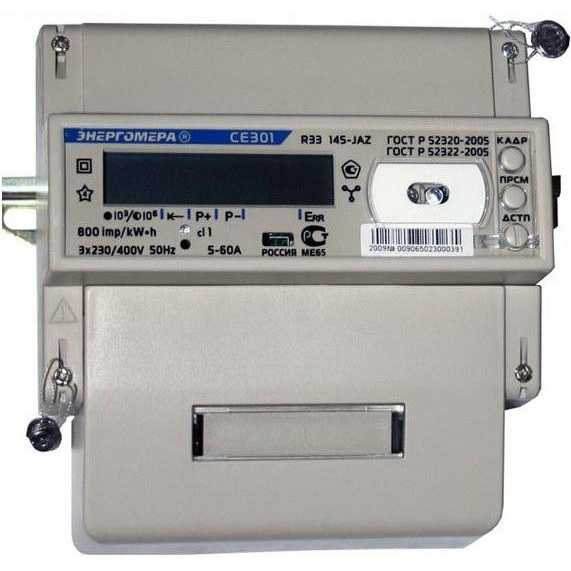
Electricity meter Energomera CE301
When you click on this button, numbers appear, showing how many kilowatts have been "clocked" for each tariff zone. There are no more differences.
Read more: Rent with the possibility of a subsequent full purchase
Take readings from the Mikron electricity meter
In Mikron multi-tariff electronic electricity meters, there is only one button on the case, and you must press it to display the required readings on the screen. Only in this case it is necessary to wait until the display shows "check marks" above the letters "T1" and "R +" (see photo). This will be the indication for the first tariff.
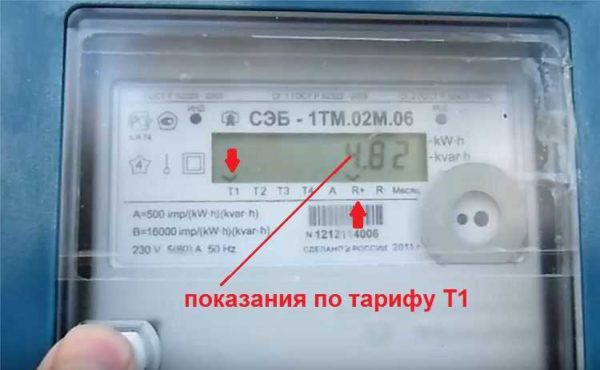

How to take readings from the Mikron electric meter model SEB-1TM.02M
Then we press the same button until the checkboxes appear above T2 and R +, if there are more zones, we press further. This is how they take readings from this day / night counter.
Saiman meters
Now, in many regions, old induction meters are replaced free of charge with electronic ones, and most often Saivan devices are installed. These are very simple devices, they do not have buttons with which you can forcibly “flip through” the readings. You just have to wait until the required value is displayed. That is, in this case, take the electricity meter readings, just wait until the required value (TOTAL) is displayed and write it down to the receipt (or transfer it to the appropriate service).
To make it easier to navigate, here is the order in which the data is displayed in this electric meter:
- the date;
- time;
- counter number;
- gear ratio (1600);
- TOTAL - readings of a single-rate meter or are displayed sequentially T1, T2, TOTAL for day / night meters (two-rate).
In the receipt it is necessary to record the TOTAL or T1 and T2 readings and also the general TOTAL. Let us remind you once again that you only need to write down the whole part, excluding the digits after the decimal point.You can watch the same information in video format.
By counter
If the meter is installed, the multiplying factor is not applied. Payment is made depending on the amount of resources used. In this case, the consumer gets the opportunity to influence the amount of charges, saving energy consumption.
Reading sequence
Meter data should be collected and transferred to the management company within 20-25 days of the reporting month. If the information is not transmitted, the invoice is issued based on the semi-annual average monthly readings.
The sequence of operations when taking readings:
- write out the current number of kilowatts, limiting the value to an integer and excluding the first zeros;

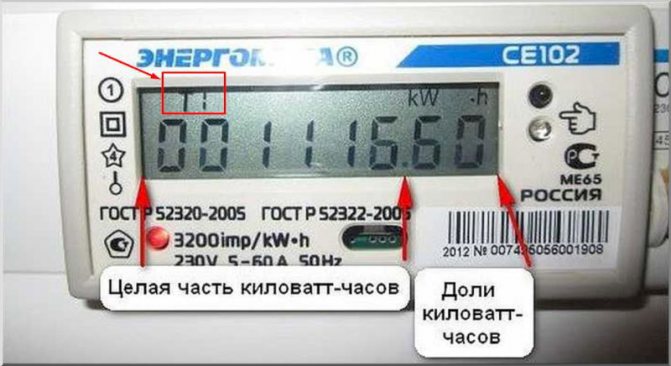
- the readings of the last month are subtracted from the recorded date;
- the difference is multiplied by the amount of the tariff, resulting in the final value of the payment.
Attention! If your meter is multi-tariff, then the sequence above is repeated for each tariff, in the photo above, the tariff zone (T1) is shown in the square. Then the amount is added up.
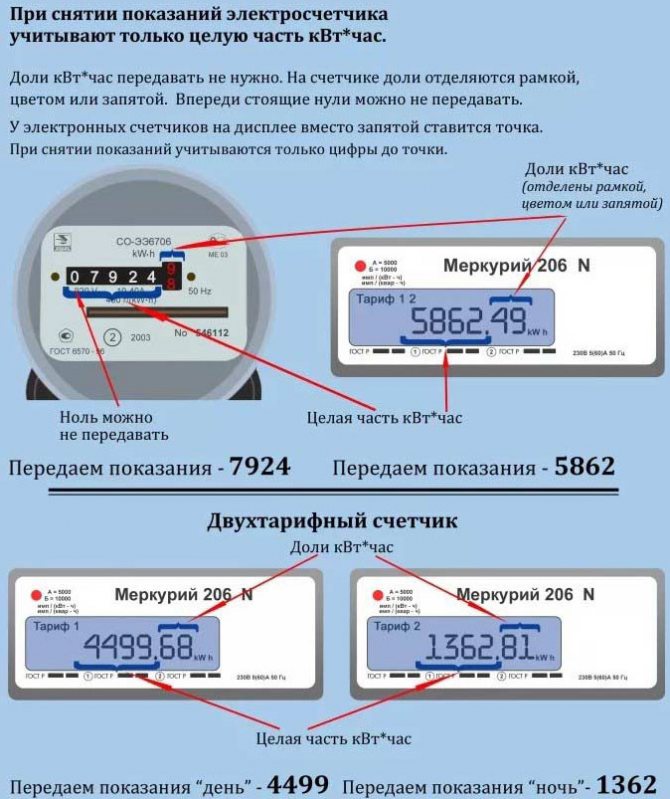

The consumer must control the timeliness of passing the next calibration of the meter. In case of expired verification, the electric meter cannot be used, and its readings are not taken into account.
Instructions for taking readings from the TsE6803V meter: Read instructions
The video describes in detail how to take readings from a multi-tariff meter (Mercury 200.02).
How to take readings from three-phase meters
There are two types of three-phase electricity meters - the old type, requiring transformers and electronic direct connection (without transformers). If an electronic one is installed, it is necessary to take the readings of the electricity meter in the same way as described above. Just write down the values, wait until the required information is displayed on the screen, or "scroll" the data to the required page.
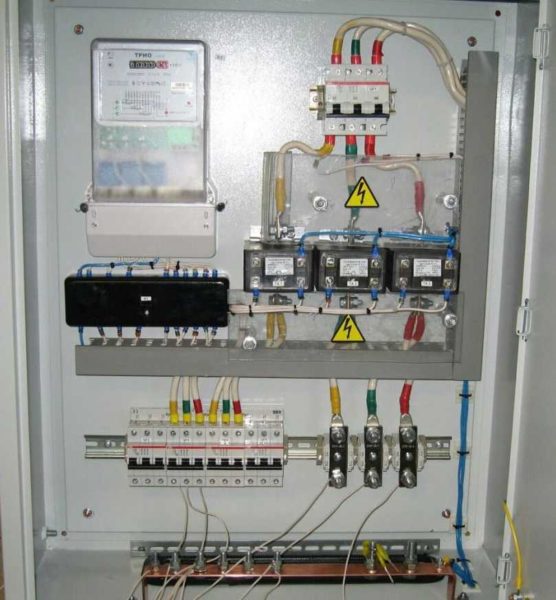

Connecting an electric meter in a three-phase network through current transformers
If a large power is allocated or there is an old-style metering device, a transformer is installed on each of the phases. To take readings in this case, you need to know the transformation ratio. The readings taken must be multiplied by this factor. The resulting figure will be the actual consumption.
But in general, you need to read the contract. The calculation procedure should be spelled out there - in some organizations they write out the readings, below they put down the transformer data or the transformation ratio, and the actual calculations are made by the operator himself. So if you have a 3-phase meter, check the form and procedure for calculations when installing and sealing the metering device and putting it into operation.
The calculation of electricity must be done correctly In our age, humanity depends on the availability of electricity. Televisions, computers, refrigerators, microwave ovens, kettles, washing machines - all this works only on electricity. And, of course, this resource is not free for us. Each person pays a certain amount of money monthly for electricity. However, the calculation of this service raises questions for many. The fact is that there are several options for distributing electricity bills. Today we will tell you what formula is used to count this service in your case.
Calculation of electricity in an apartment with an individual meter
Our apartments cannot do without a number of utilities, we all use water and electricity, and not many homes exist without gas. And we have to pay for all these services.
Many people ask: "How to calculate electricity?" It all depends on whether you pay for this service by the meter or not. Of course, in most cases, it will be cheaper for you to install an individual device that will record electricity consumption. Many have already acquired this useful and necessary mechanism.Therefore, for a start, we suggest looking at how to calculate electricity if your apartment has a meter.
Let's imagine that after taking readings from the meter, you saw that 400 kW were used in a month, while the tariff of your region for electricity is 2 rubles per kW. Thus, this month you will pay 800 rubles for electricity in your apartment.
How did we calculate this figure, you ask? In fact, it is not difficult to calculate electricity in this case. There is a formula for this. You have already seen an example of the calculation, so now let's look at the formula itself.


There are special formulas for calculating electricity
How electricity is calculated by the meter:
- First of all, you need to take readings from the meter. In this case, the red number, which is constantly spinning, is not taken into account.
- Next, you need to remember the following formula: P = VxT. Where T is the rate of your area for payment, and V is the kilowatts that you used for the month.
- Thus, you need to multiply the readings from the meter by the rate at which you pay for your utilities.
You will calculate the payment by the meter according to one formula, whether it is Ukraine, Russia or Belarus. The Ministry of Finance of each country maintains a similar calculation system. Kyivenergo also advises using this particular formula.
How to calculate electricity if there is no meter
However, not everyone has installed meters in their apartments so far. Therefore, there is an option in which you can calculate the tariff for paying for utilities, even if you do not have an electricity calculator.
The option when there is no meter in your house is convenient when your electricity consumption per month exceeds the norm. In this case, your payments will be lower. However, if you do not spend much electricity, then without installing a meter, you will overpay. Therefore, let's see an example of how to correctly calculate electricity if you do not have a meter.
If two people live in your house, and for each of them 60 kW of electricity is calculated per month, and the price of the tariff is two rubles, then for a month your cost of payment for the receipt will be 240 rubles.
How to calculate the service in this case? This formula is not as simple as the previous one, but picking up a calculator, you can easily cope with such calculations.


It is possible to calculate electricity even if there is no meter
How to calculate to find out how much to pay for light this month:
- First of all, you need to calculate the number of people living in your home. This takes into account both adults and children.
- Next, you need to find out how much electricity per month is for each person. The figures may vary depending on the region.
- Now you need to make calculations using the formula P = nxNxT. In this case, n is the number of people living in the apartment, N is the volume of kilowatts calculated for each person, and T is the cost of one kilowatt.
Using this formula, you do not need to calculate the payment for the light on a monthly basis. You only need to figure out the amount once, and it will remain so until one of the indicators in your formula changes.
Read more: International Academy of Examination and Evaluation License
According to the standard
If the electricity meter is not installed, the consumer pays for the supply of resources according to the current regulations. Regulatory indicators and tariffs are approved by local authorities, taking into account the costs of generating and transmitting electricity, as well as the individual characteristics of the region that affect the cost of resources.
If the absence of an individual metering device is explained by the impossibility of installing it for technical reasons, the calculation is performed according to the following formula:
P = k × H × T, in which
- P - the amount of the monthly payment;
- k - the number of officially registered residents on the specified living space;
- H - consumption rates established in the region;
- T is the value of the tariff that determines the cost of one kilowatt-hour.
If there are no technical reasons why it is impossible to install an electric meter, a multiplying factor is additionally included in the formula in addition to the indicated factors. Its use is explained by the fact that the authorities are trying to interest the owners in the installation of individual metering devices.
The number of residents is determined by the official registration data. But if, during the check, representatives of the management company identify persons who are on the specified living space additionally, the amount of payment will be charged taking into account the unregistered tenants.
Calculation example
Let's consider an example of calculation for a family from Moscow, consisting of 3 people. The two-room apartment is not equipped with an electric stove, and electric energy is not used to heat the premises.
The tariff set for these conditions is 5.47 rubles. per 1 kWh at a consumption rate of 56 kWh per person.
The amount is calculated using the above formula. After substituting the actual values, we get:
P = 3 × 56 × 5.47 = RUB 918.96,
For a situation where installation of a meter is not technically possible. Otherwise, the result must be additionally multiplied by 1.5. Then the payment will increase to 1,378.44 rubles.
We recommend: How to remove a seal from a water meter
How to calculate electricity from a public meter
Now, the state demands that we pay for electricity in public places, or rather for the entrance. This, of course, is not a very pleasant innovation, but there is no escape from it. The fact is that we use an elevator, light in the entrance, on the street and in the attic. For all this, someone needs to pay. Therefore, you have to pay for such services.
Here, too, there are two options for the development of events: when there is a common house meter, and when it is not. Since many houses have already installed a similar device for themselves, we suggest that you first calculate the payment for the house, if there is an electric meter.
Let's say you took readings from a general house meter and got 20,000 kW. The readings from all individual metering devices amounted to 12,000 kW. Those who do not use the meter consumed 7 kW per month. The total area of all apartments is 5000 sq. m. The total area of one apartment is 40 m. The price for one kW is 2 rubles. The calculation in this case will be as follows: ((20000-12000-7000) x 45/5000) x 2 = 18.
As you can see, the formula is quite complex, it uses a lot of numbers. Moreover, there are two of them. Let's see the rules for this calculation.
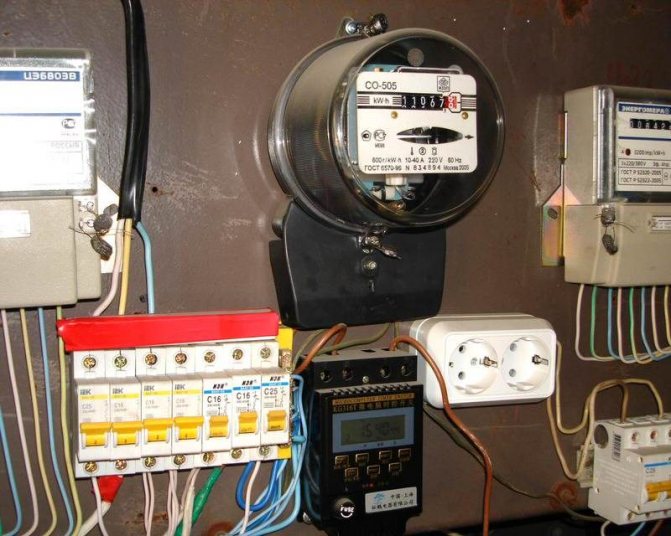

Before calculating the electricity according to the public meter, it is necessary to take readings from it
How to calculate the payment for common house electricity:
- First, you need to take a reading from the general house meter. You also need to take readings from the meter in each apartment, and find out how many apartments you have without meters.
- Now you need to measure the total area of all apartments in your home. For this, the area of each apartment is measured separately, and the results obtained are added.
- After you have found out all the obtained indicators, the calculation is made according to the formula: V1 = (Vd - Vcount - Vo) x S1 / Sb. Thus, Vд is the total indicator taken from the general house meter, V account is the total indicator taken from all individual meters of apartments, Vо is an indicator of the sum of all apartments that do not pay according to the meter, S1 is the total area of one apartment, S Is the total area of all apartments.
- After you have received the result of the calculations of the previous formula, you need to calculate the amount of payment for services. For this Pod = Vod x T. Here V od is the result of calculating the previous formula, and T is the price for the tariff.
The formula is really quite complicated and confusing.Therefore, it is usually calculated by one person. However, you can sometimes use it yourself to check the veracity of the receipt provided to you for payment. To make it easier to calculate all the values, you can use the online utility bill, there is a table with the values. With the help of such a device, you can calculate not only the cost of all your services, but also calculate the savings compared to the last month.
How do I pay my electricity bill?
Next to the previous section on the main page of the official website of Mosenergosbyt there is a section "How to pay the bill", in which you need to go to the subsection "Methods of payment for electricity".


Here you can find information about all existing payment options, namely:
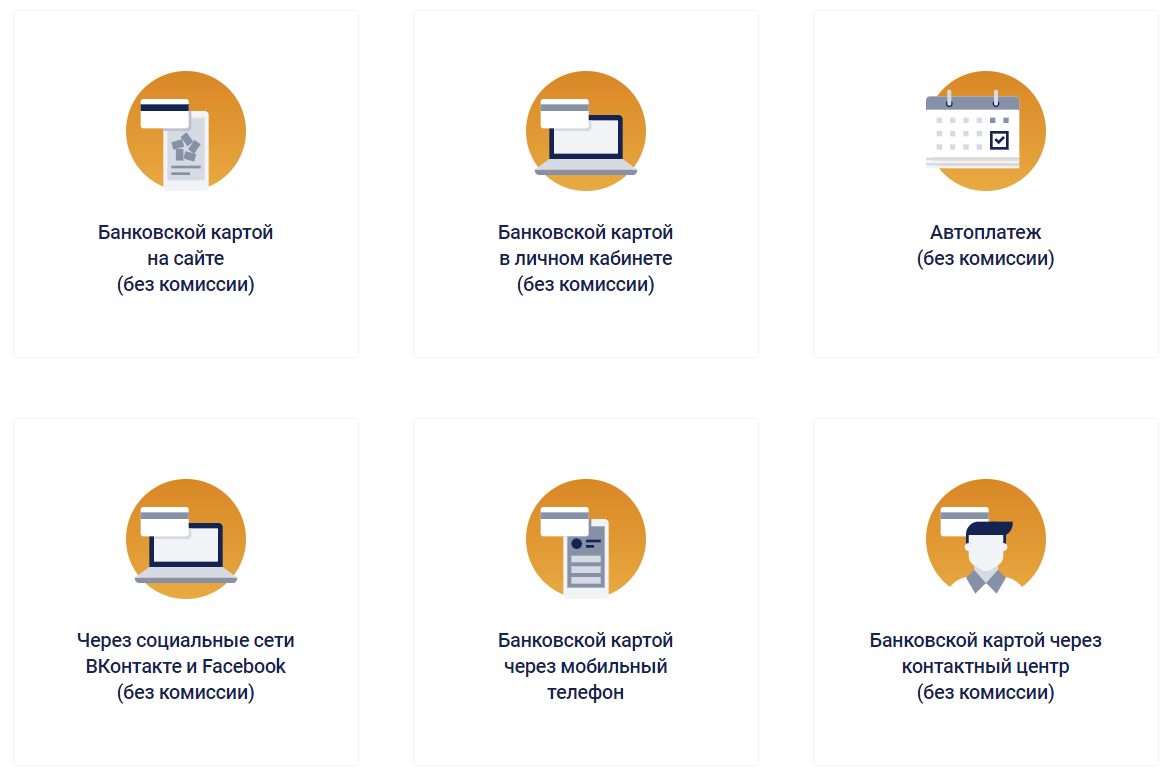

- In the subscriber's personal account by debiting funds from a bank card. It is the fastest, most commission-free and convenient way to pay for electricity.
- By calling the customer to the contact center. The required information is dictated to the operator. Funds are debited from the client's bank card.
- By printing out forms of invoices for paying for electricity in various credit institutions.
- Through . The subscriber's bank card is linked to receipts from Mosenergosbyt. The required amount will be debited on a monthly basis.
- Through self-service terminals of Mosenergosbyt, electronic wallets QIWI and Eleksnet (with commission).
- By means of a single electronic payment that combines payments for various services.


You can also download a blank form for paying for electricity services and fill it out yourself to make a payment.
receipts can be found on the official website of PJSC Mosenergosbyt on this page.
- Login to your personal account: https://lkkbyt.mosenergosbyt.ru
- Official site: https://mosenergosbyt.ru
How to pay for electricity if the house does not have a common electricity meter
There are not always common house meters in houses. The formulas for calculating the amount to be paid in this case will be simpler. However, in the absence of a common house meter, you will not be able to save electricity at the entrance. No matter how much you use it, there will still be one tariff.
If in your region the standard of total house energy per sq. meter is 1 kW, the price per kW of energy is 2, the total area of all apartments is 5000 sq. m, the area of one apartment is 50 sq. m, and the total area of common areas is 500 sq. meters, then the calculation will be as follows: (1x500x50 / 5000) X2 = 10.
This calculation is also performed using two formulas at once. However, it is simpler and less time consuming. In addition, having calculated the cost of payment for the entrance once, you can use the resulting value until one of the formula indicators changes its value.
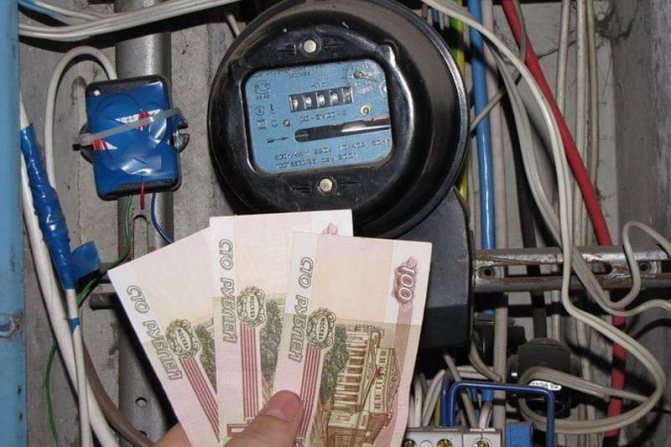

Calculations in the absence of a common house electricity meter are quite simple
Let's see how to calculate the total electricity without a meter:
- First, you need to find out what the standard for electricity consumption per square meter exists in your region.
- Next, you need to calculate the total area of all apartments in the house. You also need to calculate the average footage of one apartment. And find out the area of common areas.
- Now you need to make calculations using this formula: V1 = Nod xStotal xSo.kv / S vol. In this formula, Nod is the standard for electricity per square meter. meter of common use, Stot is the area of common areas, So.kv is the area of one apartment, Sb is the total area of all apartments.
- Now you need to make a simple calculation P1 = V1xT. Here V1 is the amount of public electricity for one apartment, and T is the tariff for utilities.
As you can see, the calculations in this case are quite simple. However, again, you will not be able to pay less than the state-established rate for a two-tariff package.
Simple calculations
Previously, electricity was paid according to the regulations: it didn't matter how much electricity you actually spent, the payment was strictly fixed.
True, there was an upper limit, which was not recommended to be crossed.
Today, meters are most often used to calculate and regulate electricity. They help you track consumption and save money if necessary.
In apartment buildings, two energy consumptions are usually distinguished: in a separate apartment and in a common house:
- in the first version, the calculation is carried out according to an individual living space meter: it includes all the electronic devices that are in the apartment.
- the second deals with the lighting of common areas: stairs, entrances, as well as the operation of the elevator and other needs of the house.
The calculation principle is quite similar:
- In the apartment: in order to correctly calculate electricity consumption, you need to know only two numbers: meter readings at the beginning of the month and at the end. To do this, in the counter display, they rewrite all the numbers that are up to the decimal point. Fractions are usually not counted because they are too small. Subtracting the first from the second, we get the electricity consumed for the month. The amount will be expressed in kWh.
It is best to take readings on the same day of the month so as not to get confused. After that, the amount received must be multiplied by the tariff: it is also indicated for 1 kW / hour. Then the received data is entered into the receipt for payment. - General building: first, they take the meter readings and calculate how much electricity was spent in a month, after which they calculate the total amount. After that, the amount received is divided among all homeowners. Usually, in this case, the division does not occur equally between people, but according to the square meters they occupy: the amount received is divided by the total amount of living space in the whole house.
It turns out the approximate consumption of electricity per 1 sq. m. To calculate the amount required for payment for one apartment, its area is multiplied by the last received number, and then - by the applicable tariff.
Note: delays in payment are fined, and therefore it is advisable to pay for electricity on time.
Perhaps you will be interested in the article on general household electricity meters. Read the article on how to correctly take readings of the electricity meter here.
What to do and how to calculate electricity without readings from the meter
Sometimes some malfunctions happen to the meter. In this case, until the problem is fixed, you will not be able to pay for it, but there are several options for how to pay for electricity - this time.
Payment for electricity at the time of meter failure:
- The meter readings are presented to the electricity supplier. If you did not have time to present them on time, then for this month you will pay according to the average electricity consumption of your apartment. To do this, the utilities will take readings from the documentation that you provided for the last six months and provide the resulting figure for payment.
- If your meter breaks down, then from the moment this device breaks down, you will pay according to average indicators, the calculation of which will take place according to the readings of the last six months. However, such a tariff will only be valid for three months, if the problem with the meter is not resolved, then you will have to pay according to the standard.
- Periodically, representatives of the power supply company check the meter readings in the apartment. If you do not allow them for three months, then you are transferred to payment according to the standards.
- In the event that you moderately broke the meter, or brought electricity from another apartment, then you will pay a receipt that the energy sales representative will draw up for you, and all the devices in your house will be included in it as if they were constantly working.
Thus, it is better to monitor your meter, and in case of a breakdown, contact the utilities in time. Otherwise, you may have problems.
How to calculate the cost of electricity and its consumption?
Let's consider how to calculate electricity consumption. On meters, the basic unit of measurement is 1 kWh (kilowatt per hour). Each region has its own prices for this kilowatt.
To calculate the payment, you need to know two indicators, tariff (how much is 1 kW / h) and energy consumption (how much you have "run over" on the meter).
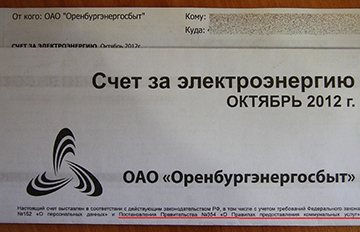

You can find out local rates in three ways:
- From the receipt that comes to the apartment or house every month.
- By calling the supplier's organization.
- On the official website of the respective power grids.
Electricity consumption is calculated by simply subtracting the last month's figure from the current figure.
Multiplying the consumption by the tariff, we get the amount that needs to be paid for the light.
Did you know that an individual heating meter can save up to 60% on space heating bills? Heating meter for an apartment - the principle of operation, installation, taking readings.
How to heat a country house with electricity, we will tell you here.
Installation of electrical wiring requires certain knowledge. The next topic https://microklimat.pro/otopitelnoe-oborudovanie/elektrichestvo-v-chastnom-dome-svoimi-rukami.html will be devoted to the intricacies of laying electricity in a private house.
Household counter (ODN)
One more question - how to calculate ONE for electricity? The general meter keeps track of electricity for the lighting of the elevator, staircase and staircase and other shared costs.
The payment from each owner will be the more, the more m 2 of living space he occupies.


In order:
- Readings are taken in the same way as on a home device.
- The last paid data for the last month is deducted.
- The resulting readings are divided by the area of all apartments.
- The result is multiplied by the number of square meters of your apartment.
- Your expense is multiplied by the local rate.
How the payment is calculated if there is no meter
How to calculate electricity without a meter? There may not be an individual metering device. In this case, the average consumption rate for the region is taken.
The number of people living in an apartment is multiplied by the average consumption rate (each region has its own) and multiplied by the local tariff.
